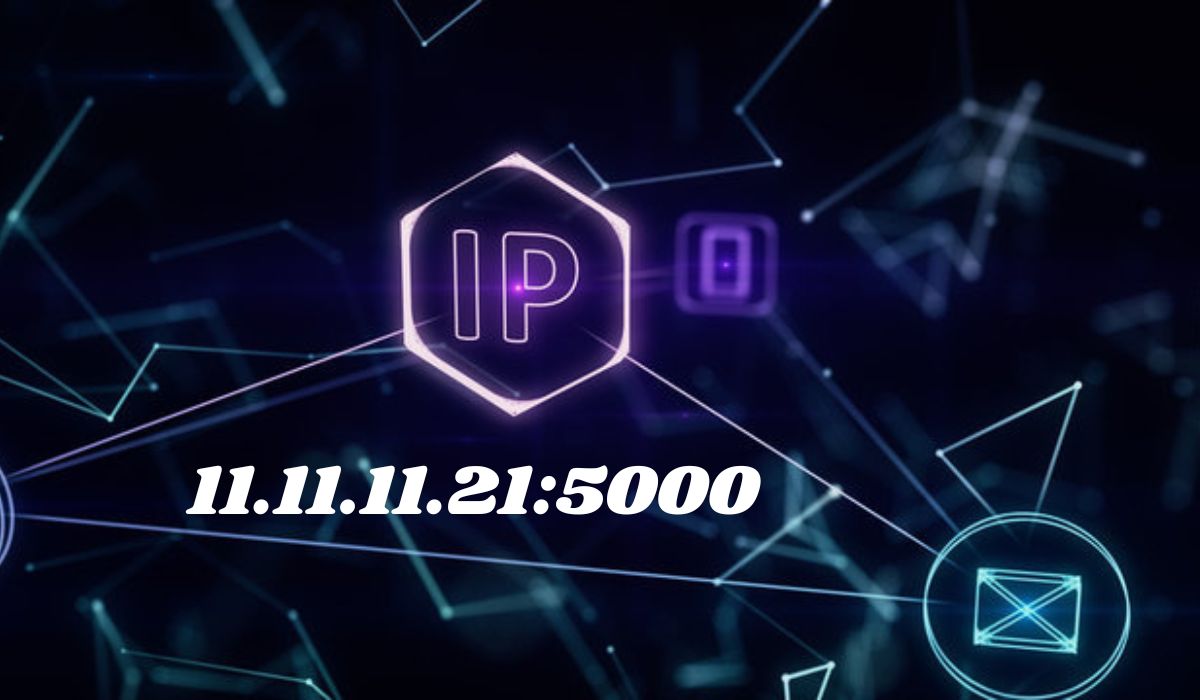Navigating the complexities of networking requires a solid foundation in understanding IP addresses and port numbers. For both seasoned network admins and curious minds, the combination of 11.11.11.21:5000 serves as an interesting focal point. This blog is your deep-dive into decoding the meaning and significance behind this specific combination, as well as IP addresses and port numbers more generally.
Introduction to 11.11.11.21:5000
Networking is an integral part of the digital world, shaping the way we connect and communicate. Within this realm, the code 11.11.11.21:5000 emerges as a pivotal concept. Representing a specific IP address and port number combination, understanding this sequence can greatly enhance your knowledge of network services, applications, and potential security implications.
Understanding IP Addresses
What Is an IP Address?
An IP address, or Internet Protocol address, is a unique string assigned to each device connected to a network. Think of it as your device’s unique identifier—its home address in the digital world. It facilitates the transfer of data between devices by guiding the location from which data is sent and received.
IPv4 vs. IPv6
IP addresses come in two forms—IPv4 and IPv6. IPv4 is the more commonly used variety, made up of four numbers separated by dots (e.g., 192.168.0.1). By contrast, IPv6 was created to accommodate the increasing number of devices on the internet; it uses eight groups of hexadecimal numbers separated by colons (e.g., 2001_0db8_85a3_0000_0000_8a2e_0370_7334).
Though IPv6 is gradually being adopted, “11.11.11.21” is an example of an IPv4 address, which remains essential to understanding networking essentials.
The Role of IP Addresses in Networking
Beyond simply identifying devices, IP addresses play a crucial role in ensuring data reaches the correct destination. When you send a data packet, it’s tagged with both the sender’s and recipient’s IP addresses. This tagging directs network traffic, ensuring packets don’t wander astray.
Insight into Port Numbers
What Are Port Numbers?
Port numbers, on the other hand, identify services or applications running on a device. They ensure information is transferred to the correct program, similar to how extensions direct phone calls to specific departments within a company. For instance, while an IP address gets data to the right house, a port number gets it to the correct room.
Commonly Used Port Numbers
While there are over 65,000 possible ports, only certain ones are regularly used. Port 80 is traditionally designated for HTTP traffic, while Port 443 is reserved for HTTPS. Port 21 is often used for FTP (File Transfer Protocol), facilitating file transfers across servers. Recognizing these typical ports can aid in understanding how network traffic is managed.
Port Number Ranges
Ports are divided into three ranges:
- Well-known ports (0-1023): Assigned to widely-used services and protocols.
- Registered ports (1024-49151): For user-defined applications and third-party services.
- Dynamic or private ports (49152-65535): Used temporarily for client-side applications.
Recognizing these categorizations helps in configuring networks effectively.
The Significance of 11.11.11.21:5000
Understanding the Combination
The combination 11.11.11.21:5000 pairs a specific IPv4 address (“11.11.11.21”) with a port number (“5000”). Though they may seem arbitrary, combinations like these can be critical in detailed network configuration, granting structured access and security.
Real-World Applications
Such combinations might be employed within enterprise settings, where specific devices need to interact or data should flow seamlessly between particular services. Utilizing a unique IP and port combo can also be essential in application development, facilitating structured communication between pieces of a system.
Potential Implications
While the specific IP and port combo 11.11.11.21:5000 may not be widely recognized, understanding its potential use in scenarios isn’t just theoretical. Whether it’s part of an experimental setup or an internal service, the practice of utilizing specific IP/port combinations can be integral to network management.
Managing and Securing Network Services
Importance of Network Management
Network management involves setting rules and guidelines for data packets and monitoring network traffic. Effective management ensures that data is transmitted smoothly while minimizing the risks of bottlenecking or unauthorized access.
Secure Your Services
Securing services linked to specific IP addresses and ports is crucial. Firewalls, for instance, regulate traffic by blocking unauthorized connections while permitting legitimate data. Network segmentation—dividing a network into smaller segments—also improves security and performance by isolating potentially vulnerable areas.
Best Practices for Administrators
For network administrators, regular maintenance is paramount. This includes updating software, monitoring for suspicious activity, and configuring settings that adhere to industry standards. Proactively addressing vulnerabilities ensures smoother operations and fewer disruptions.
Implications for Developers and Network Administrators
The Developer’s Viewpoint
From a developer’s perspective, understanding IP and port intricacies is crucial. They often build applications that rely on these configurations, managing backend communications or enhancing user-facing experiences. Secure integration of services is achieved by carefully selecting IP and port combinations.
The Admin’s Role
Network administrators draw upon their knowledge of IPs and ports to ensure seamless network operations. Their expertise lies not only in configuring but also in troubleshooting, identifying potential bottlenecks, and optimizing traffic flows based on service needs.
Identifying Security Concerns
Administrators and developers alike benefit from proactive monitoring. Vigilantly watching for unusual access patterns or unexpected data transfers is fundamental to preventing breaches. Regular audits and access controls further protect network resources.
Future Trends and Considerations
Evolution of IPs
The adoption of IPv6 continues to progress, providing more extensive IP address space. Although IPv4 remains foundational, IPv6 offers enhanced capabilities, essential for an expanding digital landscape with increasing interconnected devices.
Emerging Technologies
With the rise of IoT and smart technologies, specific IP/port combinations are instrumental. Devices ranging from wearables to home automation systems rely on efficient, secure communication pathways, ushering in a new epoch of connectivity.
The Horizon
Looking forward, the demand for dynamic configurations will only increase as more services move online. For businesses, mastering IP and port fundamentals fosters flexibility, ensuring they’re equipped to adapt in unprecedented times.
YOU MAY ALSO LIKE: 127.0.0.1:62893 Guide to Optimize Performance and Resolve Issues
Conclusion
Understanding IP addresses and port numbers—like the intriguing combination of 11.11.11.21:5000—is more relevant than ever. Whether you manage networks, develop applications, or indulge a curiosity about the digital realm, grasping these essentials will invariably enhance your understanding. For further exploration or personalized guidance, consider reaching out to professionals who specialize in network configurations. Embarking on this learning journey equips you not only for the present but also for a future brimming with technological advancements.
FAQs
What is the role of an IP address in networking?
An IP address serves as a unique identifier for devices, enabling data transmission across networks.
What is the difference between IPv4 and IPv6?
IPv4 uses a 32-bit address space, while IPv6 uses a 128-bit space, allowing for significantly more IP addresses.
Why is understanding port numbers important?
Port numbers ensure data reaches the correct service or application on a device, regulating network traffic effectively.
How does 11.11.11.21:5000 benefit enterprises?
It exemplifies utilizing specific IP/port combinations for structured communication and enhanced security within a network.
What considerations are important for future digital trends?
Transitioning to IPv6 and leveraging secure IP/port configurations in emerging IoT environments are crucial for future-proofing networks.











